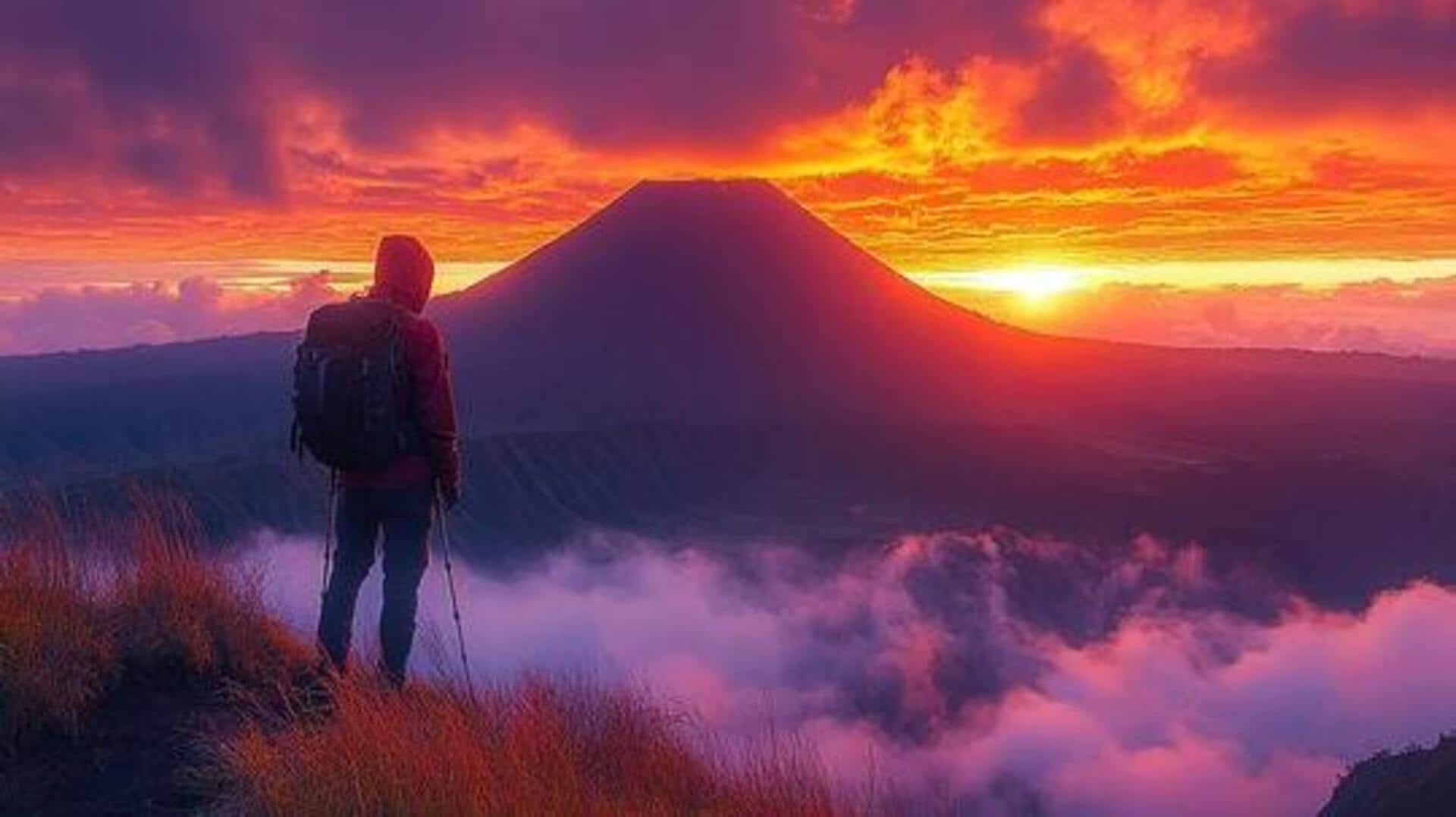
How to prepare for a volcano hiking adventure
What's the story
Trekking through ancient volcanoes is an adventure like no other. The beauty of nature, coupled with the history of geology, makes the experience all the more memorable. Over millions of years, the volcanoes have shaped the terrain, making it an incredible sight. From rugged paths to beautiful mountains, it is something you cannot miss. Here's all you need to know about this journey.
Geological insights
Exploring geological wonders
Volcanic landscapes are replete with geological wonders like lava flows, craters, and ash deposits. These formations narrate tales of bygone eruptions and give insight into Earth's dynamism. Learning about these aspects adds depth to the trekking experience by explaining the terrain's unique features. Trekkers can witness how volcanic activity has shaped ecosystems and impacted biodiversity in these regions, firsthand.
Preparation tips
Preparing for volcanic terrain
Trekking through volcanic landscapes is no walk in the park. The weather can change in an instant and paths can be treacherous. Hence, make sure you carry the right gear, including sturdy boots, weather-resistant clothes, and navigation tools. Know local regulations and safety guidelines, too. Being well-prepared means trekkers can fully enjoy their adventure and minimize risks associated with this rugged environment.
Photography tips
Capturing stunning views
With their dramatic contrasts and vibrant colors, volcanic landscapes provide stunning photography opportunities. Trekkers should time their hikes during sunrise or sunset for best lighting conditions. Using wide-angle lenses can help capture the expansive views, while focusing on unique geological features adds depth to the images. Patience is key in waiting for perfect moments that highlight the beauty of the landscape.
Environmental awareness
Respecting natural habitats
Preserving the integrity of volcanic landscapes is key to maintaining their ecological balance. Trekkers must practice Leave No Trace principles by minimizing litter, sticking to designated trails, and respecting wildlife habitats. Knowing the cultural significance of these areas also helps appreciate their historical value. By being mindful stewards of nature during treks, adventurers contribute positively towards conserving these remarkable environments for future generations.